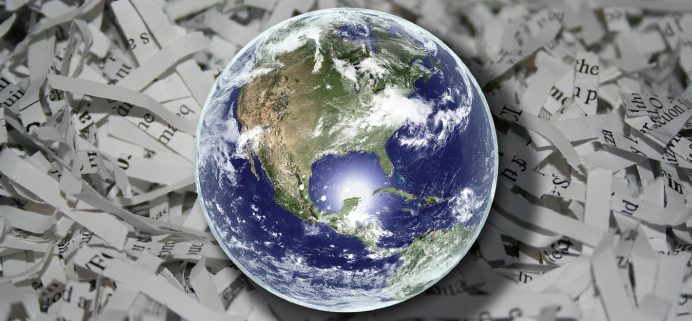A Paperless Workplace Is Good Business
Wasted time. Wasted money. No one likes waste–the mere mention of the word evokes the feeling of regret. But across the world we do it every day. Often times, as individuals, we waste because we cannot find an alternative. But for small businesses today, much time and money is wasted by ignoring the obvious, glaring alternative of transitioning to a paperless workplace.
According to the U.S. Environmental Protection Agency, paper and paperboard products accounted for roughly 69 million tons (or 27 percent) of the U.S. municipal waste stream in 2012–nearly twice the amount of the next most wasted material, food. On average, each U.S. citizen is responsible for 1.2 lbs. of paper waste per day. And while recycling efforts have helped to mitigate paper waste, the best approach to reducing waste is to avoid generating it in the first place.
Paperless Possibilities
The Information Age has ushered in new possibilities for conservation. In the vast majority of cases–especially with the broad adoption of e-signatures and cloud drives–paper documents are not necessary. Yet, too many businesses have been slow in transitioning to a paperless workplace.
Small and medium-sized businesses in the U.S. employ around 56.1 million people. Imagine if these businesses fully embraced a paperless work environment. Yes, this would sharply reduce waste by businesses, but more importantly it would influence how employees think about paper use outside the office.
Do I really need the newspaper delivered?
Do I need to receive a paper bill?
Do I have to print this off?
Where else can I save paper?
An environmentally responsible employer brand is one benefit of moving to a paperless work environment, but there are cost savings to be realized with the transition as well. Paperless solutions not only remove the need to use paper for common tasks and processes, many times they automate those same processes as well. So in addition to the savings associated with not buying paper and print cartridges, a business can return higher profits through increased process efficiency.
A Culture of Conservation
Your business can take the first step in becoming a paperless workplace by first creating a culture of conservation. Here are a few ideas on how to use less paper in your office:
- Purchase printer and copier units that can print on both sides of a sheet of paper.
- Set all computers and copiers to default to double-sided printing.
- Use email instead of paper or faxes.
- Don’t print email messages.
- Work on drafts electronically, using “edit” and “comment” features.
- Choose reusable cups, plates, and utensils instead of disposable paper and plastic items for your office break room.
- Use paper towels made with post-consumer recycled material or use cloth napkins.
- Choose reusable lunch bags or coolers.
To make the full leap to a paperless workplace, you’ll need to explore how new technologies can further remove your reliance on paper. From communications and marketing to document storage and employee management, virtually every aspect of your business can be enhanced by investing in technology. And the best part? Many of these technologies are very affordable… and sometimes even free.
So stop wasting time and money, transform your business into a paperless workplace. You have nothing to lose–except paper…lots of expensive paper.
ExactHire provides paperless HR solutions to help small businesses achieve greater efficiency. Please contact us today to learn how you can stop wasting time and money by going paperless!







